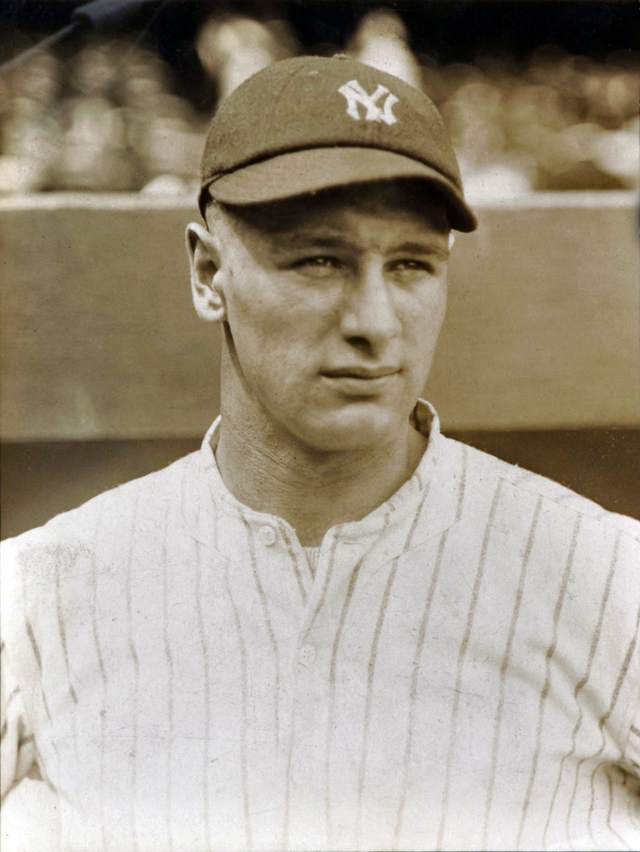









Lou Gehrig was a legendary baseball player for the New York Yankees and is widely remembered for his incredible achievements on the field and his battle with ALS, a disease that now carries his name. This article delves into the multifaceted legacy of Gehrig, exploring his athletic career, personal life, and the lasting impact of his struggle with Amyotrophic Lateral Sclerosis.
Early Life and Career Beginnings
- Birth and Background: Lou Gehrig was born on June 19, 1903, in New York City to German immigrant parents. His upbringing in a working-class family shaped his strong work ethic and determination.
- College Athlete: Gehrig attended Columbia University, where he excelled as a football player. His athletic prowess caught the attention of baseball scouts, leading to his signing with the New York Yankees in 1923.
- Major League Debut: Gehrig made his MLB debut on June 15, 1923. Initially, he played as a backup first baseman, but quickly established himself as a key player.
Rise to Stardom: The Yankees Dynasty
- Record Breaking: Gehrig's career blossomed in the late 1920s and 1930s, where he formed a formidable partnership with Babe Ruth. Together, they helped propel the Yankees to multiple championships and set numerous records.
- Iron Horse: Known as the "Iron Horse," Gehrig was famous for his durability. He played 2,130 consecutive games, a record that stood until Cal Ripken Jr. broke it in 1995. His streak highlighted not only his physical stamina but also his dedication to the game.
- MVP and Championships: Gehrig won the American League MVP award in 1927 and led the Yankees to six World Series championships during his career, solidifying his status as one of baseball's greats.
The Shadow of ALS: A Personal Battle
- Diagnosis: In 1939, Gehrig's health began to decline. After experiencing unusual symptoms, he was diagnosed with Amyotrophic Lateral Sclerosis (ALS) in 1939, a progressive neurodegenerative disease that affects nerve cells in the brain and spinal cord.
- Retirement Announcement: Gehrig retired from baseball on July 4, 1939, in a poignant farewell speech at Yankee Stadium. His words, "Today, I consider myself the luckiest man on the face of the earth," resonated deeply, showcasing his courage and love for the game, even in the face of terminal illness.
Legacy and Impact Beyond Baseball
- Lou Gehrig's Disease: ALS became popularly known as Lou Gehrig's Disease due to his high-profile battle with the illness. This association raised awareness about the disease and its devastating effects.
- Foundation and Research: Following his death on June 2, 1941, efforts to understand ALS intensified. Organizations such as the ALS Association have since been formed to promote research and support for those affected by the disease.
- Cultural Impact: Gehrig's life and struggles have inspired countless books, films, and documentaries, ensuring that his legacy lives on. His story embodies resilience, dedication, and the human spirit's capacity to confront adversity.
The Ongoing Fight Against ALS
- Awareness Campaigns: In recent years, initiatives like the Ice Bucket Challenge have significantly increased funding for ALS research, highlighting the continued relevance of Gehrig's legacy.
- Scientific Advancements: Research into ALS has progressed, with scientists exploring various therapeutic avenues, including gene therapy and neuroprotective strategies. Gehrig's legacy motivates many to push for breakthroughs that could one day lead to a cure.
Conclusion: A Legacy of Inspiration
Lou Gehrig's life transcends the realm of sports. His journey, marked by extraordinary talent and an indomitable spirit, continues to inspire generations both on and off the field. As we remember Lou Gehrig, we recognize not only a baseball legend but also a symbol of perseverance against life's greatest challenges. His story serves as a powerful reminder of the importance of compassion, resilience, and the relentless pursuit of knowledge in the fight against ALS.
